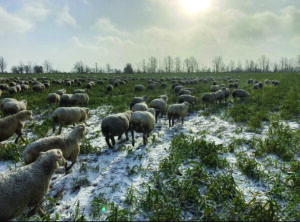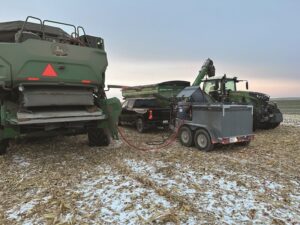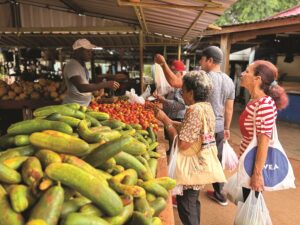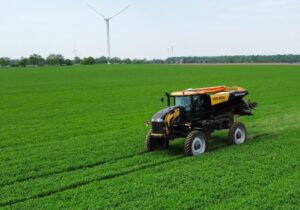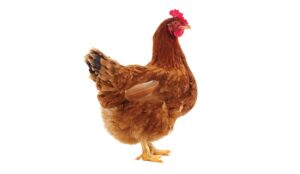Trump’s agricultural agenda
Farmers everywhere are impacted

Agricultural exports and the future of crop protection are among the threats to American farmers since President Donald Trump began his second term, instituting highly controversial measures to fulfill his “Make America Great Again” (MAGA) mandate. Exactly how agriculture will endure is anyone’s guess, but there’s no question the ripple effect is being felt everywhere, including Canada.
Export-dependent U.S. grain farmers may be most vulnerable to the Trump administration’s policies and priorities. The combination of waning markets due to the president’s tariff policies, along with the negative connection being purported between Americans’ health and widely used crop protection products, is making an impact on Trump’s polling numbers: a May poll showed that 46 per cent of rural voters approve of Trump’s job performance, while 45 per cent disapprove. That was a big change since February, when 59 per cent approved and 37 per cent disapproved.
But it is not totally unexpected. As far back as January, at the American Farm Bureau Federation (AFBF) annual convention in San Antonio, Texas, AFBF President Zippy Duvall warned convention delegates of the inherent threat of uninformed elected officials who wave the MAGA flag. “Many of them, they’re not familiar with agriculture, and some of them have ideas that would set us back years in modern-day farming and interrupt our food security,” he said. “Now, how we engage with these skeptics of modern agriculture is tremendously important.”
DOGE CUTS IMPACT AGRICULTURE
Shortly after Trump took office, the Department of Government Efficiency (DOGE) was created to reduce federal government department budgets, including the United States Department of Agriculture (USDA). If workers’ jobs didn’t align with the Trump government’s priorities, which dismissed the likes of foreign aid, food aid, international development, food inspection, conservation, research, or diversity, equity and inclusion—they were fired or offered immediate buyouts.
By May, more than 15,000 of the USDA’s 100,000-strong staff were on their way out the door. One institutional victim of the cuts was the University of Illinois Soybean Innovation Lab, established in 2013 to help establish a soybean market in sub-Saharan Africa. Lab director Peter Goldsmith said the lab’s efforts were a win for U.S. growers, creating a new market in the world’s fastest-growing region. He called the lab closing “a huge opportunity loss for U.S. growers,” before taking it upon himself to find funding to keep the lab open.
Other federal workers took a proactive approach—one that ended their government careers. Before DOGE’s cuts impacted their jobs, 98 of 167 food safety scientists at the USDA’s Agricultural Research Service resigned to protest DOGE cuts. Their work included detecting pathogens, preventing foodborne illness, and identifying chemical and other contaminants in food.
MAKE AMERICA HEALTHY AGAIN
The appointment of Robert F. Kennedy Jr. as secretary of Health and Human Services created another pause for concern in the agriculture sector as he promoted his ‘Make America Healthy Again (MAHA)’ agenda.
For grain farmers, the concern lies with Kennedy’s views of modern crop protection products, especially pesticides and particularly glyphosate. Prior to his government appointment, Kennedy worked as a lawyer and was involved in litigation against the glyphosate product Roundup. In October, when Trump promised to let Kennedy “go wild on science” if elected, the agri-food sector started bracing for the worst.
Trump budgeted $500 million for MAHA and supported a hastily assembled MAHA report on childhood health. But even before the report was released, U.S. farm leaders lined up to warn against Kennedy’s stance. Four of the biggest farm groups, the American Soybean Association, National Corn Growers Association, National Association of Wheat Growers, and International Fresh Produce Association criticized the lack of consultation between farmers and the government.
“Despite the effort of many of our organizations to work with [MAHA] to provide factual information about American food production, we have heard disturbing accounts that the commission report may suggest U.S. farmers are harming Americans through their production practices and creating foods that [are] destroying our microbiome and bodies—leading directly to our chronic disease crisis,” the group said. “Nothing could be further from the truth.”
The farm groups’ suspicions proved to be accurate. Although Kennedy would later say he had no intention of disrupting glyphosate use on American farms, the MAHA Commission contended that one of the four major drivers behind the rise in childhood chronic illness was “environmental chemicals.” Others, it said, were poor diets, chronic stress, lack of physical activity, and over-medicalization. It blamed these ills on conflicts of interest and corporate influence in the food, chemical, and pharmaceutical industries. For its part, the American Soybean Association called the report “brazenly unscientific and damaging to consumer confidence in America’s safe, reliable food system,” not to mention how such reports affect consumers in Canada and in other countries, Brazil and Argentina, among them, where glyphosate is also popular.
So, where is U.S. Agriculture Secretary Brooke Rollins in all this? According to the USDA, she and Kennedy are working together in crafting what they call “sensical Dietary Guidelines for Americans,” which, in May, were said to be set to be released soon. The USDA said Rollins and Kennedy are working to ensure federal nutrition advice is sound, simple, and clear and will prioritize “whole, healthy, and nutritious” foods such as dairy, fruits, vegetables, and meats and suggest limitations of foods high in sugar and salt (no mention of grain). Given that Kennedy has claimed canola and soybean seed oil is toxic, the agri-food sector may once again be impacted.
ETHANOL POLICY GARNERS INDUSTRY ACCLAIM
Also worrisome to Midwest U.S. grain farmers is Rollins’ position on ethanol. From 2003 to 2018, she was the president and CEO of the Texas Public Policy Foundation, a conservative think tank that opposed ethanol requirements for fuel. Farmers were concerned her history would harm ethanol development. However, in June, the U.S. Environmental Protection Agency released proposed biofuel blending volumes under the Renewable Fuel Standard (RFS) that garnered industry acclaim.
The agency proposed that refiners must blend 15 billion gallons of conventional biofuels in 2026 and 2027. It also proposed regulatory changes to the RFS program, including reducing the number of Renewable Identification Numbers (RINs) generated for imported renewable fuel and renewable fuel produced from foreign feedstocks and removing renewable electricity as a qualifying renewable fuel under the RFS program (eRINs).
Devin Mogler, president and CEO of the National Oilseed Processors Association, was effusive in his praise. “We applaud the administration for recognizing the need to reduce the RIN value for biofuels made from imports of tallow and so-called ‘used cooking oil,’ which have been displacing U.S. soybean oil, harming farmers and biofuel producers alike for years,” he said. “These strong volumes and prioritization of U.S. farmers align policy with actual domestic production capacity and ensure that American-grown feedstocks remain at the heart of a secure and affordable energy future.”
Looking ahead, among the agriculture issues on the table are the long-stalled U.S. Farm Bill, which is expected to significantly cut nutritional support to many Americans, and state versus federal requirements for matters such as animal welfare and pesticide labelling. A projected 20-plus per cent drop in farm incomes, along with export market losses due to Trump tariffs, are among the challenges facing U.S. farmers in the coming months. •










